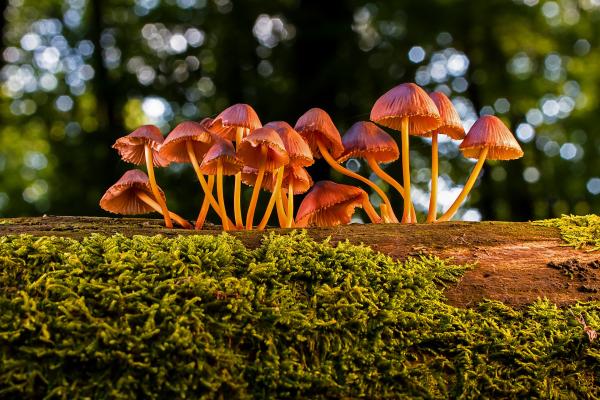Disclaimers first – the research involves mice, not humans, so we are on firm ground discussing the research results, but the ground gets shaky when we apply the findings to our lives. Consider the following, more speculative thoughts than settled science.
The bacteria that live within us are responsible for providing us with a host of nutrients, the off casts of their metabolic activity. In exchange, we give them shelter and, to be fair, a steady stream of nutrients. The digestive microbiome has been a popular area of research regarding our nutrition and response to diseases. Even in the face of COVID-19, most of us think of the microbiome as housing bacteria, but it turns out that we can also support fungus – the mycobiome.
The researchers wanted to see how the mycobiome responded to a more “Western,” e.g., highly processed diet. They employed pathogen-free mice; 18 mice from each of four standard scientific sources. They performed studies on what was living in their gut when they received them from the vendors and after eating standard “mouse chow,” as well as a more processed version. (You know the diet with great tasting ingredients that want you craving more when you probably need less)
The micro and mycobiomes of each vendor’s mice differed, consistent with their slightly different parents and births. For the fungi, 18 “core” genera (the plural of genus) were identified in all the mice, with 14 additional genera that varied amongst them.
With longer exposure to the standard diet, the diversity was lost primarily in those 14 varying genera; and the fungal population becomes more consistent for all the animals.
With exposure to the more processed diet, the fungal diversity was again decreased, but to a far greater degree. The 18 “core” genera on arrival were reduced to 12 with the standard diet and “collapsed” to only 1. The mycobiome seemed more sensitive to its environment than the microbiome.
The initial takeaway is that the environment within our digestive tracts is altered by what we eat. A processed diet alters the mycobiome differently than “mouse chow” – to a degree, our biome, micro or myco, are what we eat.
Evidently, female mice are “protected from diet-induced obesity,” who knew? So the researchers then looked at the males. Those on the standard diet remained svelt, while those on the processed diet gained additional weight. In addition to gaining fat mass, there were appropriately altered hormonal responses in leptin, ghrelin, and a new hormone, for me, resistin. [1] Additionally, the changes in the bacterial biome were influenced by the fungal biome changes; they interacted.
The mycobiome's composition influences how equivalent caloric diets may cause one of us to gain weight and another to have no change. We empirically know this from talking with our friends, some of whom swear by low carbs, high-fat diets as the answer, and others who require primal grains.
What is new and different is that what we eat influences the gut's environment and, therefore, the composition of our gut micro and mycobiomes. They, in turn, influence how we can gain and lose weight – they are subtly controlling our intake to turn our gut into their “Golden Corral” buffet. We are truly holobionts. Walt Whitman was right, “we contain multitudes.”
So maybe the real question about what we should eat is whether we are faithful stewards to those that live within, assuring that they can continue to provide tributes for our largess in the form of vitamins, nutrients. Are you serving up fine dining or junk food to your bacterial and fungal minions?
[1] Leptin communicates your energy balance; lower levels mean you need more energy sources. Ghrelin tells you that you are hungry and need to eat. Resistin increases the production of LDL from your fat cells
First, a thank you to The Conversation for pointing me to the research. Source: The gut mycobiome of healthy mice is shaped by the environment and correlates with metabolic outcomes in response to diet. Communications Biology DOI: 10.1038/s42003-021-01820-z




